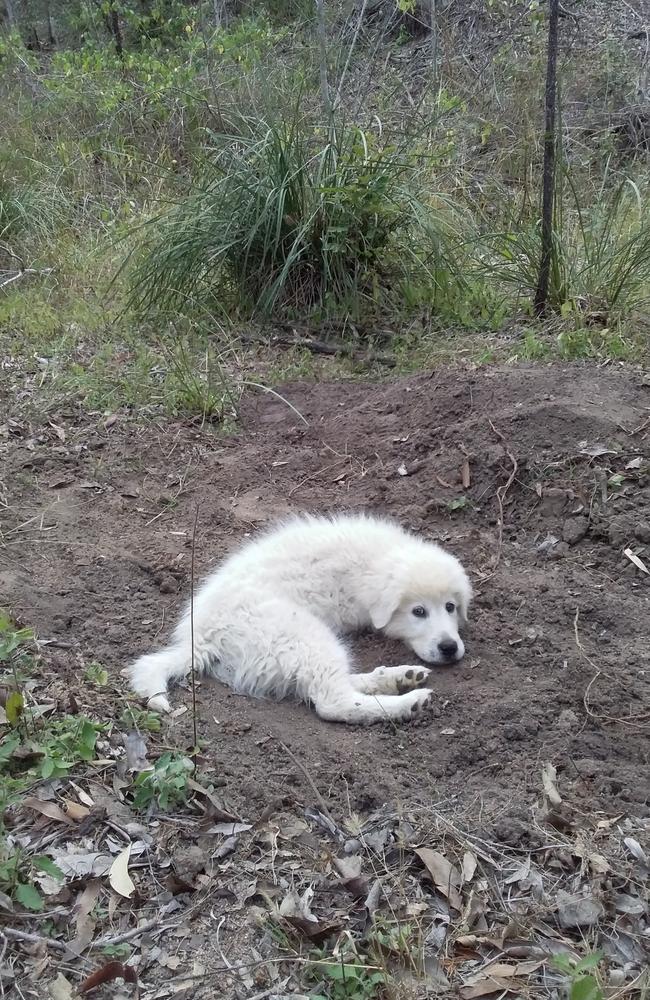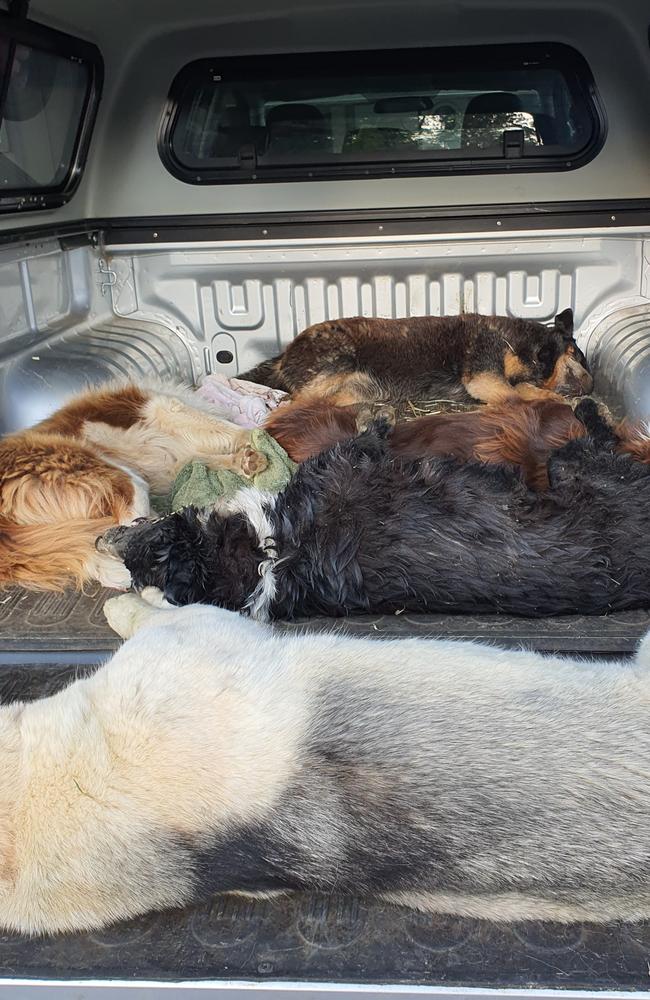Queenslanders urged to have say on use of 1080 animal bait before animal welfare review deadline
Outraged animal activists are urging opponents of a deadly bait to take swift action after it was omitted from the first Animal Welfare Act review survey in decades. WARNING: Distressing.
QLD News
Don't miss out on the headlines from QLD News. Followed categories will be added to My News.
WARNING: Distressing images
Outraged animal activists are urging opponents of a deadly bait used to kill “pest” animals to contact the Queensland government before May 21 after the poison was omitted from the first Animal Welfare Act review survey in decades.
In April, the Department of Agriculture and Fisheries (DAF) invited Queenslanders to have their say on issues under the Animal Care and Protection Act 2001 including the use of baits and traps, restraining dogs in utes and other open vehicles, the scientific use of animals, as well as whether the current penalties for animal cruelty offences were harsh enough.
But, when the discussion paper and subsequent public survey were released online, there was no mention – or questions seeking public opinion – on the use of 1080 or other poisons used in the government-run animal baiting program anywhere.

Alex Vince, campaign manager for The Coalition of Australians against 1080 Poison, said he was “outraged” by the omission.
“As this is a matter of increasing community concern, we believe that its inclusion is essential,” he said.
“It’s also really concerning, because it leaves you asking more questions as to why have they done this? Are they deliberately narrowing the scope of the review, particularly with regards to companion animal deaths in Queensland?
“People are becoming increasingly aware that 1080 is not humane, it causes extreme suffering to every animal that ingests it, whether they’re a target animal or not.”
MAN CLAIMS TO HAVE LOST 15 DOGS TO 1080 BAITING
But Agricultural Industry Development and Fisheries Minister, Mark Furner, said all submissions on the animal care act were welcome.
“We welcome submissions on all aspects of the Animal Care and Protection Act, not just those represented in the discussion paper,” he said.
“If people have a particular concern about an animal welfare issue that is not listed in the discussion paper, they are not restricted by the discussion paper and can raise any matter related to animal welfare as part of the review.
“I encourage anyone passionate about animal welfare issues to make a submission before May 21.”
Mr Vince, 32, said animal baiting not being listed as survey questions would make a difference.
“They can say it doesn’t limit the scope of what people can include in their submissions … they are guiding questions and are a big deal,” he said.
“If you have a short list of questions in a survey, then those are the things people will focus on because people will directly aim to answer those specific questions.”

Sodium fluoroacetate – a chemical commonly known by its brand name of 1080 – is a highly toxic pesticide that is injected into meat, grain or carrots and used by the government and private landholders to kill introduced “pest species” such as feral dogs, foxes, cats, rabbits, pigs – and in some cases, dingoes and native wildlife – in regular baiting programs.
It is easily ingested by “non-target” animals because it is odourless, tasteless and colourless.
There is no antidote.
Many large property owners lay baits to protect their livestock from being mauled by wild or wandering dogs.
Many proponents of the bait state 1080 is essential for farmers, and that it is safe for most native animals.
But more and more traumatised pet owners have been coming forward around the nation claiming their dogs or goats have died excruciating deaths from confirmed or suspected 1080 poisoning after unknowingly eating unsecured baits that should not have legally been in their area, despite laws requiring 1080-users to notify neighbours and post warning signs.

At least 11 dogs and two pet goats died within months of each other in 2020 by either confirmed or suspected 1080 baiting in Queensland alone, including five dogs in five hours belonging to one family.
The pet goats and all of the dogs, except for one, were allegedly either in their yard at the time they unknowingly ate a bait or were on walks with their owners in areas where there were no signs about baiting taking place – which is required by law.
The owners of the dogs that had not left their properties suspect unsecured baits were carried, and dropped, by birds.
The pesticide is so lethal that animals who simply lick the saliva or vomit of a poisoned animal, usually die from secondary poisoning.
In the rare case an animal survives, it suffers from lifelong neurological impairment.
In March, 61 sheep were poisoned by 1080 north of Bordertown in South Australia.
It was suspected the sheep knocked over and ate a drum of leftover bait that had not been disposed of properly.
There have been several more pet deaths of around the nation and in previous years, according to the Coalition of Australians against 1080 Poisoning.
Mr Vince urged residents to visit the survey on the DAF web site and to write their own submissions about 1080.
“They could include things like the fact (the poison) is not target-specific, it’s indiscriminate and that the government should be looking at kinder, more sustainable and more humane alternatives to baiting,” he said.

A 2017 Biosecurity Queensland publication claims many mammals, birds and reptiles have developed a much higher tolerance to 1080 than introduced animals, due to their evolution with naturally occurring fluoroacetate in some native plants.
“The dose rates used in declared pest animal control, coupled with responsible baiting practices, mean that the chances of killing native animals are minimised,” it states.
A Biosecurity spokesman previously told the Courier Mail a review into the use of 1080 would need to be undertaken by Queensland Health, who, as the administering authority, also sets the rules for use of 1080 for feral animal control.
The use of 1080 has been banned in numerous countries for years, but is still used in Australia, New Zealand, Japan, Korea, Mexico and Israel.
In the US, baits laced with the poison was outlawed in the 1970s, but it is still in restricted use in the form of livestock protection collars.
Opponents of the deadly poison are also continuing to call on The Australian Pesticides and Veterinary Medicines Authority (APVMA) to also carry out a review, after not having undertaken one since the early 2000s.


